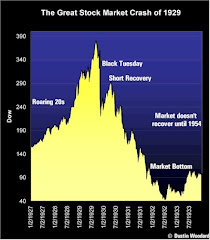In preparation for that session some MP's were doing their homework on the issue. I will post my recommendations to one MP in an upcoming blog post.
This week as the discussions about CPP reform heated up The Current on CBC had an interesting series.You can listen to it here. Canada Pension Plan Reform
I will be visiting with Jack Dean of the Pension Tsunami in Los Angeles. Jack is a very interesting man and has his pulse on pension reform in the US. We always have an interesting conversation. I am sure I will have lots to report.
An idea was sent to me by Jack Ellefson of Calgary Alberta. It is a novel idea and one that I had not heard before. Please read it carefully because it contains some excellent ideas.
Incentives for RRSP and Defined Contribution Pension Plans.
Canadian pensions are commonly funded with annual contributions of 50% by the employer and 50% by the employee. But the majority of municipal, provincial and federal employees have their Defined Benefit (DB) pension plans subsidized by their employers. The civil servant employer contribution amounts to 66 2/3%, with the employees share at 33 1/3%. The “pension adjustment” found on tax filing then allows the civil servant to place the additional 16 1/3% annual contribution into a self directed Registered Retirement Savings Plan (RRSP). Sovereign pensioners have well funded, secure, inflation protected pension plans, plus the ability to enhance retirement by having the capacity to contribute to a self directed RRSP
Private sector RRSP and Defined Contribution (DC) pensioners should be accorded similar retirement initiatives. By following the very successful Registered Education Savings Plan (RESP) for children’s education, whereby the government contributes directly into the RESP, proportional to the funds contributed. RESPs receive up to a 20% grant on the first $2000 contribution to a child’s education fund , to a maximum of $400 per year. A similar program should be put in place to enhance the contributions of RRSP and DC pension investors.
A maximum RRSP contribution of $22,000 for say 30 years with compound growth at 5% would result in a retirement nest egg of $1.46 million dollars. (Similar growth is expected in DC pension plans, both of which upon retirement are converted to a Registered Retirement Income Fund. (RRIF).
Were the federal government to enhance the individual’s annual contributions by
16 1/3% , to maximum of $4000 per year, the annual contribution would now be $26,000. This annual contribution of $26,000 would compound to $1.73 million over 30 years at 5%. But most importantly would provide that extra incentive for Canadians to plan early to develop their retirement savings.
Federal subsidy to individual RRSPs and DC pension plans , would bring an element of fair treatment for retirement pensions of all Canadians. RRSP incentives would not be available to taxpayers eligible for the “pension adjustment.”
It is difficult to estimate the cost of an RRSP incentive program. The 2009 department of finance “tax expenditures” for RRSP contribution deductions was $7.85 billion. At a 30% tax rate it would imply about $26 billion annual contributions, which at a 16 1/3% incentive would cost about $4.25 billion. While this would be an expensive program, if it were as successful as the RESP incentive program, would foster growth of RRSP investing and would return ever larger amounts of tax payments as RRSPs are converted to Registered Retirement Income Funds (RRIF).
Bill Tufts
Fair Pensions For All




Bill. Good blog.
ReplyDeleteThe latest actuarial report for the CPP (25th actuarial report) was released recently. It looks like they have figured out "a better way" to calculate the unfunded liability of the CPP.
Under the old way (the closed group method) the unfunded liability on Dec. 31, 2009 is 748 billion$
Under the new way (the open group method) the unfunded liability on Dec. 31, 2009 is 6.9 billion$
If you get a chance in the future I would appreciate your thoughts on this matter of figuring out "a better way" to calculate the unfunded liability of the CPP.
The following link is to the 25th actuarial report of the CPP which was tabled before parliament on Nov.15 , 2010
The topic of unfunded liabilities and the closed and open group methods of calculating it are covered on pages 70 - 72.
http://www.osfi-bsif.gc.ca/app/DocRepository/1/eng/oca/reports/CPP/CPP25_e.pdf
It's easy to say that incentives like this would encourage people to plan for retirement earlier but real life shows that often this is not the case. Short term considerations most often outweigh long term planning to everyone's detriment. Only 3% of eligible Canadians hit their RRSP limit. Numbers like this will, sadly, escape most Canadians who understand the concept only in vague terms like "it's good if I save". That understanding will not be changed much by these reforms and thus behavior will not be greatly altered. We should push better education instead.
ReplyDelete